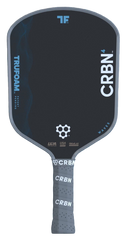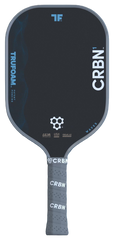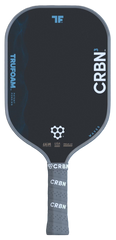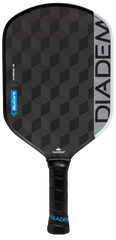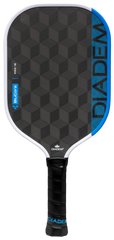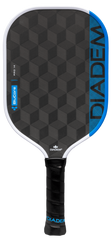Pickleball isn’t just a fun way to spend your afternoon; it’s a lively sport that mixes in elements of tennis, badminton, and table tennis.
Whether you’re just starting out or looking to polish your skills, mastering some advanced techniques can really take your game up a notch. This article dives into the key aspects of pickleball, covering effective serving strategies, the finesse of dinks, volley techniques, and the all-important third shot drop.
You’ll also discover essential net play strategies and defensive tactics to help you rule the court. So, get ready to elevate your pickleball skills to the next level!
The Basics of Pickleball
Pickleball is a super fun and engaging racquet sport that mixes elements of tennis, badminton, and table tennis, making it perfect for players of all ages and skill levels. Whether you're just starting out or you've been playing for a while, getting a grasp on the basics of Pickleball is key. It sets you up to master more advanced techniques like court positioning and shot selection.
The game takes place on a court with a net, and you’ll use a paddle to hit a perforated plastic ball. There are specific rules that govern the gameplay to keep things fair and ensure everyone has a good time.
Mastering the Serve
Mastering the serve is key in Pickleball because it sets the tone for the whole rally and can really influence your game strategy, especially during competitive matches like tournaments. A solid serve can keep your opponent guessing and open up chances for you to play offensively.
By working on different serving techniques, like spin serves and advanced serves, you can mix things up and make yourself unpredictable, which makes it tougher for your opponents to defend against you.
Types of Serves
There are several types of serves in Pickleball, and each one has its unique advantages, letting you adapt your strategy based on the situation and your opponent's weaknesses. Whether you like to go for a powerful serve that shows who's boss or a well-placed spin serve that leaves your opponent scratching their head, knowing when and how to use different serves can really level up your game.
For example, the flat serve, which you execute with minimal arc and maximum speed, can catch your opponents off guard, especially if you pull it out right at the beginning of a match. On the other hand, a high lob serve gives you more time to position yourself while pushing your opponent back, setting you up for a strong follow-up shot.
Remember, each serve requires precise mechanics—think grip, stance, and follow-through—as well as some strategic thinking about where your opponent is and how they play. In those high-stakes matches, mixing up your serves keeps your opponents guessing and can really change the game in your favor.
Tips for a Strong Serve
To develop a strong serve, focus on a few key techniques that involve proper paddle grip, body positioning, and shot precision. These elements can really amp up the effectiveness of your serve. It’s crucial that you maintain control over your paddle and consistently place the ball exactly where you want it; this is essential for setting up your overall game strategy.
On top of those basics, honing your footwork patterns is vital for achieving a powerful serve. Start by finding a solid stance that allows for quick lateral movement, so you can position yourself just right for each serve.
Timing is another big deal; practice the rhythm of your wind-up and release to create a smooth flow. Don’t forget to emphasize a strong follow-through to maximize your power and accuracy. By weaving these techniques into your routine, you’ll elevate your serve performance and gain that competitive edge you’re aiming for.
Improving Your Dinks
Improving your dinks is crucial for leveling up your Pickleball game. That soft shot can really throw your opponent off their rhythm and help you control the pace of the match.
When you master your dinking techniques, you open the door to strategic opportunities, especially when you're playing close to the net. It can even set you up for some advanced offensive plays. By paying attention to your shot selection and placement, you can seriously enhance your overall tactical gameplay.
What is a Dink?
A dink is that soft shot in Pickleball that you execute just over the net, aimed to land right in your opponent's non-volley zone. It’s all about putting them in a tough spot. When you really get the hang of dinking and understand its significance in net play, you can elevate your game by keeping the pressure on your opponent while also opening up chances for your own shots.
This little strategic move is crucial because it messes with the rhythm of those aggressive players, forcing them to generate power from a tricky position. When you nail a dink, it not only keeps the ball low—making it tough for your opponent to return aggressively—but it also paves the way for potential winning shots. For example, a perfectly timed dink can pull your opponent in, causing them to miscalculate their next move.
You’ll often see elite players showcasing their dinking skills during rallies. It’s impressive how this technique can create better positions and control the pace of the game, turning an ordinary rally into a captivating tactical exchange.
How to Execute a Dink Shot
To effectively execute a dink shot, you really need to focus on your technique, timing, and awareness of the court. This way, your shot will not only be accurate but also strategically smart.
Positioning yourself correctly is crucial, and your grip on the paddle is just as important; it gives you the delicate touch you need for a successful dink.
Start by adopting a semi-open stance with your feet shoulder-width apart, and make sure your knees are slightly bent to help with balance. When you’re getting ready to strike, keep your grip firm but relaxed—think of it like holding a birdie.
The trick is to position your paddle just below the ball’s height while keeping your eyes locked on it for that precise hit.
Timing is everything here; you want to make contact when the ball is descending for the best results. After you hit, let your follow-through be soft and controlled, guiding the ball just over the net.
And don’t forget about shot selection—it’s key! Go for a dink when your opponent is out of position or when you need that gentle touch to counteract their aggression.
Advanced Dink Strategies
Advanced dink strategies are all about mixing deception, placement, and tactical gameplay, which means you can manipulate your opponent’s movements and create chances for some offensive plays. By varying your shots and using different angles, you can keep your rival guessing and maintain control of the rally.
In the heat of a competitive match, mastering these techniques becomes essential. You can boost your effectiveness by recognizing patterns in your opponent's reactions, which will help you decide on your next shot—whether it’s a soft lob or a sudden drop shot.
Using feigned shots is a great way to throw your opponent off, leading them to misread your intentions and opening up the court for a well-placed strike. By evaluating your opponent's strengths and weaknesses in different situations, you can develop tailor-made strategies that keep their defenses on their toes while also setting you up for that winning shot.
Perfecting Your Volleys
Perfecting your volleys is crucial if you want to become a well-rounded Pickleball player. It helps you respond effectively to your opponent's shots and keeps the pressure on during exchanges.
By honing your volleying techniques, working on your footwork, and improving your shot precision, you can really elevate your game, especially in those fast-paced moments at the net.
Types of Volleys
In Pickleball, you’ll encounter a variety of volleys, like overheads, side shots, and forehand/backhand volleys, each with its own special role during the game. Getting a grasp on these different volley types and knowing when to use them can seriously amp up your offensive play and make you way more effective on the court.
Overheads are your best friends when it comes to dealing with high balls coming at you from an angle. They let you strike down with some serious power. Then there are side shots, which are perfect for those moments when you need to react to an opponent’s fast return. They help you make those quick lateral moves to keep control of the game. And don’t forget about forehand and backhand volleys—they’re the bread and butter of your game, allowing you to react quickly while generating spin or placing the ball just where you want it.
To get these techniques down, it’s all about perfecting your body positioning, timing, and stroke mechanics. This way, you'll be ready to respond effectively based on how the game is unfolding and what strategies your opponent is throwing at you.
Proper Technique for Volleys
To really nail your volleying game, you need to focus on proper technique, like paddle control and timing. This will help you hit those shots with both power and accuracy. Being able to read your opponent's shots and positioning yourself just right can seriously boost your volleying skills.
Start with the right grip; a continental grip is often the way to go because it gives you the most versatility. Next, make sure your stance is balanced—keep your feet shoulder-width apart and your knees slightly bent. This way, you’ll stay ready and mobile. This solid posture helps with timing, letting you anticipate the ball's trajectory and respond quickly.
When you engage in the volley, don’t forget that your follow-through is super important. It helps with your paddle control and affects the ball's direction and spin. If you consistently practice these elements, you’ll see your confidence soar and your overall gameplay improve.
Drills to Improve Your Volleys
Incorporating specific drills into your practice routines can really boost your volleying skills, especially when you focus on footwork and consistency. These elements are key for quick reactions during those fast-paced exchanges. The more you practice these drills regularly, the better your timing will get, and you’ll feel a noticeable boost in your confidence at the net.
By dedicating time to targeted exercises, you’ll develop a better understanding of how to position yourself effectively, which makes for smoother transitions between shots. For example, when you do partner volley drills, not only do you improve communication, but you also sharpen your hand-eye coordination and reaction times. Throwing in some shadow volleys helps you visualize the ideal form while highlighting the importance of balance and body placement.
In the end, consistently engaging in these activities can lead to significant progress in your individual skills and positively impact team dynamics on the court.
Mastering the Third Shot Drop
Mastering the third shot drop is a game-changer in Pickleball. It can really swing the momentum in your favor, helping you set up a solid offensive strategy and take control of the court.
You’ll usually want to execute this shot after the serve and return. By aiming to drop the ball into your opponent's non-volley zone, you can throw off their timing and positioning, which opens up opportunities for your next shots.
What is the Third Shot Drop?
The third shot drop is a key move in Pickleball, and it comes into play right after the serve and the return. The goal here is to land the ball softly in your opponent's non-volley zone. This shot is crucial for your game strategy because it helps you transition from the baseline to the net while putting pressure on your opponent.
When you use this technique, you can throw off your rival's rhythm and create chances for easier volleys. The mechanics are all about that delicate touch—just enough precision to get the ball arcing just over the net and dropping right where you want it.
Don’t underestimate the strategic value of the third shot drop; it’s not just about gaining control of the court, but it also forces your opponents into a defensive stance. Mastering this shot is what separates the novices from the seasoned players, showing that you really understand court dynamics and tactical positioning.
How to Execute the Third Shot Drop
To pull off the third shot drop like a pro, you need to focus on your technique and timing. It's all about placing that ball accurately in your opponent's non-volley zone. Pay attention to key factors like your paddle grip, stance, and follow-through—they're crucial for controlling that drop shot.
Start by getting into an athletic stance. Bend your knees a bit and keep your feet shoulder-width apart for balance. Make sure you're positioned to step into the shot; this will give you the power and precision you need.
As the ball comes your way, grip your paddle firmly but not too tight—think of it as a gentle caress instead of a hard swing to avoid over-hitting. When you strike the ball, do it gently on the upward bounce, angling your paddle face slightly downward to ensure it just clears the net and lands softly in the non-volley zone.
Don’t forget to follow through with a smooth, controlled motion. This helps you maintain body alignment and makes it easier to recover for your next shot.
Advanced Third Shot Drop Strategies
Advanced third shot drop strategies are all about deception, shot selection, and tactical gameplay. This gives you the power to manipulate your opponent’s positioning effectively. By mixing up your shots and disguising what you’re about to do, you can create openings that lead to even more offensive opportunities.
It’s crucial to understand your opponent’s stance and movement patterns. By paying attention to their foot placement and readiness, you can anticipate how they’ll react. This advanced reading of the game allows you to make those subtle tweaks to your drop shot, ensuring it lands just beyond the kitchen line or takes advantage of a weak angle.
Using a mix of high and low trajectory shots keeps your opponents guessing, and placing shots towards their weaker side can really shift the dynamics in your favor. The key is to be adaptable and ready to pivot your tactics based on how the game unfolds.
Strategies for Playing at the Net
Strategies for playing at the net are essential in Pickleball. They help you take advantage of your opponent’s weaknesses while keeping control over the game flow.
To excel at net play, you’ll want to master different shot techniques and grasp court positioning. Plus, good communication with your partner is key, especially when you’re playing doubles.
How to Position Yourself at the Net
Positioning yourself effectively at the net is crucial for successful gameplay. It lets you intercept shots and take charge of the match’s pace. When you understand footwork patterns and keep a balanced stance, you can respond quickly to your opponent's plays while maximizing your shot options.
To truly excel in this area, focus on developing agile footwork. This will help you make quick lateral movements and transition smoothly between offense and defense. Balance is just as important; it gives you stability during volleys and helps you hit more powerful shots.
By honing your ability to read your opponent's movements and anticipate their shots, you'll be able to position yourself advantageously, often forcing your rivals into making those pesky unforced errors.
Mastering your net positioning can be your secret weapon. It creates opportunities for you to take control of the court and gain the upper hand.
Communication with Your Partner
Effective communication with your partner is key to nailing those team dynamics during your Pickleball matches, especially when you’re playing doubles. Think about how clear verbal cues and eye contact can help you coordinate strategies and choose your shots, cutting down on confusion and boosting your overall effectiveness as a team.
Besides just talking, using hand gestures can really take your understanding and responsiveness to the next level during those fast-paced exchanges. You’ll find that building chemistry with your partner often comes from practice, where you both start to develop a natural sense of each other's strengths, weaknesses, and preferred shot placements.
It also helps to establish roles within the team. Maybe one of you focuses on offensive strategies while the other takes on the defensive maneuvers. Ultimately, creating a supportive environment where you both feel comfortable sharing your thoughts and concerns will lead to smoother communication and help you adapt to the ever-changing dynamics of each match.
Advanced Net Play Techniques
Advanced net play techniques are all about mixing tactical gameplay with a variety of shots, keeping your opponents on their toes and creating scoring opportunities. If you can anticipate your opponent's moves and throw in a range of shots, you’ll definitely gain an edge in competitive matches.
To really excel in this area, you should focus on your footwork and positioning. These are key for quickly reacting to your opponent's shots. Knowing when to pull out tactics like drop shots, volleys, or lobs can completely change the momentum of a rally. Plus, being aware of your opponent's weaknesses and adjusting your shot selection accordingly can make a huge difference.
Mastering these advanced techniques not only boosts your individual performance but also adds a whole new layer of strategy to the match.
Defensive Strategies for Pickleball
Defensive strategies in Pickleball are super important for keeping your cool and staying effective when the pressure's on. They help you adapt to your opponent's moves while reducing mistakes.
To build a solid defensive game, you need to focus on a few key elements: understanding your court positioning, improving your reaction time, and honing your ability to read the game like a pro.
How to Handle Lobs
Handling lobs effectively is a crucial part of your defensive play in Pickleball. You need to have strong court awareness and be able to make quick decisions. By anticipating your opponent's moves and positioning yourself just right, you can respond to those lob shots and minimize their impact on your game.
It's important to develop a solid understanding of lob mechanics, including the angles and heights that might catch you off guard. One handy tip is to maintain a low center of gravity, which helps with balance and allows you to move quickly from side to side. Practicing overhead smashes in different scenarios will boost your confidence and control when the pressure's on.
Don't forget about communication with your partner! By working together and using the entire court space, you can not only handle lobs but also regain control of the rally. Adapting your stance and making quick adjustments based on the ball's trajectory will enable you to respond promptly and keep your opponents on the defensive, setting you up for a more successful game overall.
Dealing with Fast Shots
Dealing with fast shots means you need quick reaction time and precise shot execution, which are essential for a solid defensive strategy in Pickleball. By sharpening your reflexes and improving your paddle control, you can effectively respond to those rapid exchanges and hold your ground on the court.
Understanding various techniques like anticipation and body positioning can seriously boost your ability to counteract those swift plays. Focus on developing a keen sense of timing; it’ll help you predict the trajectory of the ball, allowing you to prepare for incoming shots more proactively.
Practicing volleys and incorporating drill exercises into your routine can significantly enhance both your reaction time and shot accuracy, transforming those potentially overwhelming fast exchanges into manageable situations. As you get better at these techniques, you’ll notice your overall confidence on the court skyrocketing, enableing you to engage more assertively during those intense matches.
Tips for Recovering from a Bad Shot
Recovering from a bad shot is a key skill in Pickleball, helping you keep your cool and adjust your game strategy when things don’t go as planned. By understanding the mental side of the game and using techniques for quick recovery, you can bounce back effectively and stay focused.
When you make an error, try practicing mindfulness techniques like deep breathing or visualization to clear your mind and reset your focus. It’s crucial to remind yourself that mistakes are just part of the learning process; they help build your resilience and foster a positive mindset.
Breaking down your gameplay into smaller segments can really help you adapt better, allowing you to target specific areas that need improvement. By using these strategies, you can enhance your recovery and boost your overall performance, turning each match into a valuable learning experience.
Frequently Asked Questions
What are some advanced pickleball techniques to improve my game?
Some advanced pickleball techniques to take your game to the next level include using spin shots, mastering the dink shot, and incorporating the third shot drop.
How can I add more power to my pickleball shots?
To add more power to your pickleball shots, focus on using your legs and core muscles, use a backhand flick for more speed, and practice proper paddle angle and wrist snap.
What is the best way to defend against a lob shot?
The best way to defend against a lob shot is to quickly move back and get in position, use a high backhand volley to return the shot, and practice anticipating and reacting to lobs during drills.
What are some advanced serving techniques in pickleball?
Some advanced serving techniques in pickleball include the topspin serve, slice serve, and the pendulum serve. Each of these techniques can add variety and deception to your serves.
How can I improve my footwork in pickleball?
To improve your footwork in pickleball, focus on moving your feet quickly and efficiently, practice split step and shuffle movements, and work on your balance and agility through specific drills.
What is the role of strategy in advanced pickleball techniques?
Strategy plays a crucial role in advanced pickleball techniques, such as setting up your opponent with shots, anticipating their moves, and strategically placing shots to create openings and win points.
